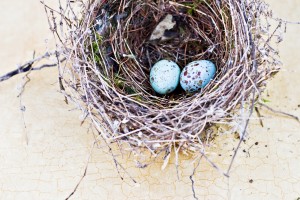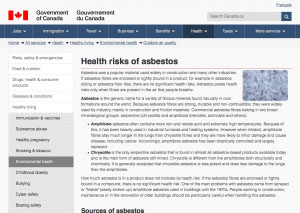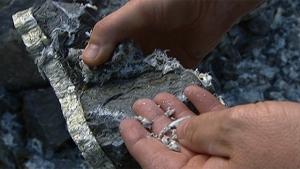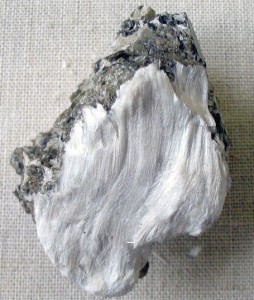We hope you, as a business or homeowner, find our information helpful. If you have a question, use the contact link to email R.C. White.

Spring outdoor maintenance Spring is finally here! Take advantage of the warmer weather and get a head start on your outdoor spring maintenance list. Do a walk-around of your property. Look for any damage to your roof or chimney as well as walls, doors, and windows. Here is a list of things to check outside yout home: Decks Scrub mildewed areas and treat for water stains, mildew, and fungus. Roof Clean. Check for leaks. Check for damaged, loose or missing shingles. Check vents and louvers for birds, nests, squirrels, and insects. Check flashing around roof stacks, vents, and skylights for leaks. Chimney Check for deterioration of bricks and mortar. Check for leaks. Check for birds, nests, squirrels, and insects and remove them. Close off any vulnerable areas with wire mesh. Gutters and downspouts Clean and check for leaks, misalignment, or damage. Reattach any parts which have come apart. Windows Check that caulking and weather stripping is intact. Clean. Vinegar and newspapers is…
Spring Home Maintenance Winter is finally over! Spring is a good time to clean areas of the house that often go neglected. There’s more to spring cleaning than cleaning windows. Staying on top of your home maintenance and repairs can help prevent potential problems. Here is a checklist of things you should do inside the home: Water heater Flush out hot water to remove accumulated sediment. If you are unsure how to do this, consult a professional. Attic Examine for evidence of any leaks. Check insulation and remove or add if necessary. Has any of your insulation moved from the last time you inspected it? Check for evidence of birds, squirrels, raccoons, etc. Check for proper ventilation each season. Countertops Inspect for separations at sinks and backsplash. Recaulk where required. Tiled areas Inspect for loose or missing grout or caulking. Regrout or recaulk if necessary. Shower doors/tub enclosures Inspect for proper fit. Adjust if necessary. Inspect caulking and recaulk if necessary. Weather…

How do I protect from spring thaw? Before we can enjoy the warmer weather spring brings, there’s the spring thaw to deal with. Make sure your home is protected when all the snow melts and the spring rain comes. The Windsor Essex area had a reasonable amount of snowfall this year but water issues may still occur. With spring thaw and rainfall, your home may be at risk of water entering your basement and causing damage. You may see a small amount of water on your basement floor, but the real issue is behind the finished walls. Water may be trapped behind the drywall and cause mould. It will take a professional like RC White to access the damages and test for mould. Follow some simple tips to reduce the risk of spring thaw problems in your home: • Ensure your downspouts are extended so they discharge rain or meltwater at least ten feet away from the foundation. Downspouts should not be connected to the sanitary sewer system inside your home. • Remove any debris in the gutters and downspouts to ensure water is taken away…

Canadian Government and Asbestos Asbestos was a popular material used widely in construction in commercial buildings and homes. If asbestos fibres are enclosed or tightly bound in a product, for example in asbestos siding or asbestos floor tiles, there are no significant health risks. Asbestos poses health risks only when fibres are present in the air that people breathe. If asbestos becomes friable (it can be crumbled, pulverized, or reduced to powder by hand pressure) it is dangerous to humans. Roofing materials, insulation, tiles and other materials used in construction process may have asbestos that is a potentially life-threatening material. If inhaled accidentally, it can lead to serious health complications. Therefore, the material has to be removed carefully by a trained professional. Minimizing Workers’ Risk Construction and maintenance workers should avoid creating asbestos dust from scraping, brushing, rubbing or cutting damaged insulation. Insulation damage should be reported to the appropriate authority,…

How do we test for asbestos? Do you know where to look? Asbestos products were in nearly every commercial building and home before 1978. Indoor uses include: • Cement pipes (such as sewer lines or water mains) • Caulk, putty, and other adhesives (like plumber’s putty) • Certain ceiling materials (the the popular “popcorn ceiling”) • Fuse box linings • Any and all forms of insulation • Millboard and rollboard • Pipe coverings • Vinyl tiles – floor, wall and ceiling Hire a Contractor If you suspect any of these materials may be present in your older commercial building, the next step is to have the material tested for asbestos. It is always best to hire an experienced and licensed contractor like RC White to perform an assessment. These professionals may be able to tell by a visual inspection whether certain products contain asbestos, but this all depends on the material. But even this is not an infallible method, as the only guaranteed way to know if a home is contaminated with asbestos…

Is there asbestos in commercial buildings? Asbestos is one of 11 materials the Ontario government has deemed too dangerous to be used in construction materials. Asbestos has a long history working well as a fire retardant and insulator and can be found in many commercial buildings. If removed improperly, it can risk the lives of workers. Also, the Ontario Ministry of Labour could fine your business! And a clean up bill of improperly removed asbestos can be very, very expensive! Health Risk Asbestos was a popular material used widely in construction and many other industries. If asbestos fibres are enclosed or tightly bound in a product, for example in asbestos siding or asbestos floor tiles, there are no significant health risks. Asbestos poses health risks only when fibres are present in the air that people breathe. Smoking, combined with inhaled asbestos, greatly increases the risk of lung cancer. Commercial asbestos fibres belong in two broad mineralogical groups: serpentine (chrysotile) and amphibole (tremolite, actinolyte…
